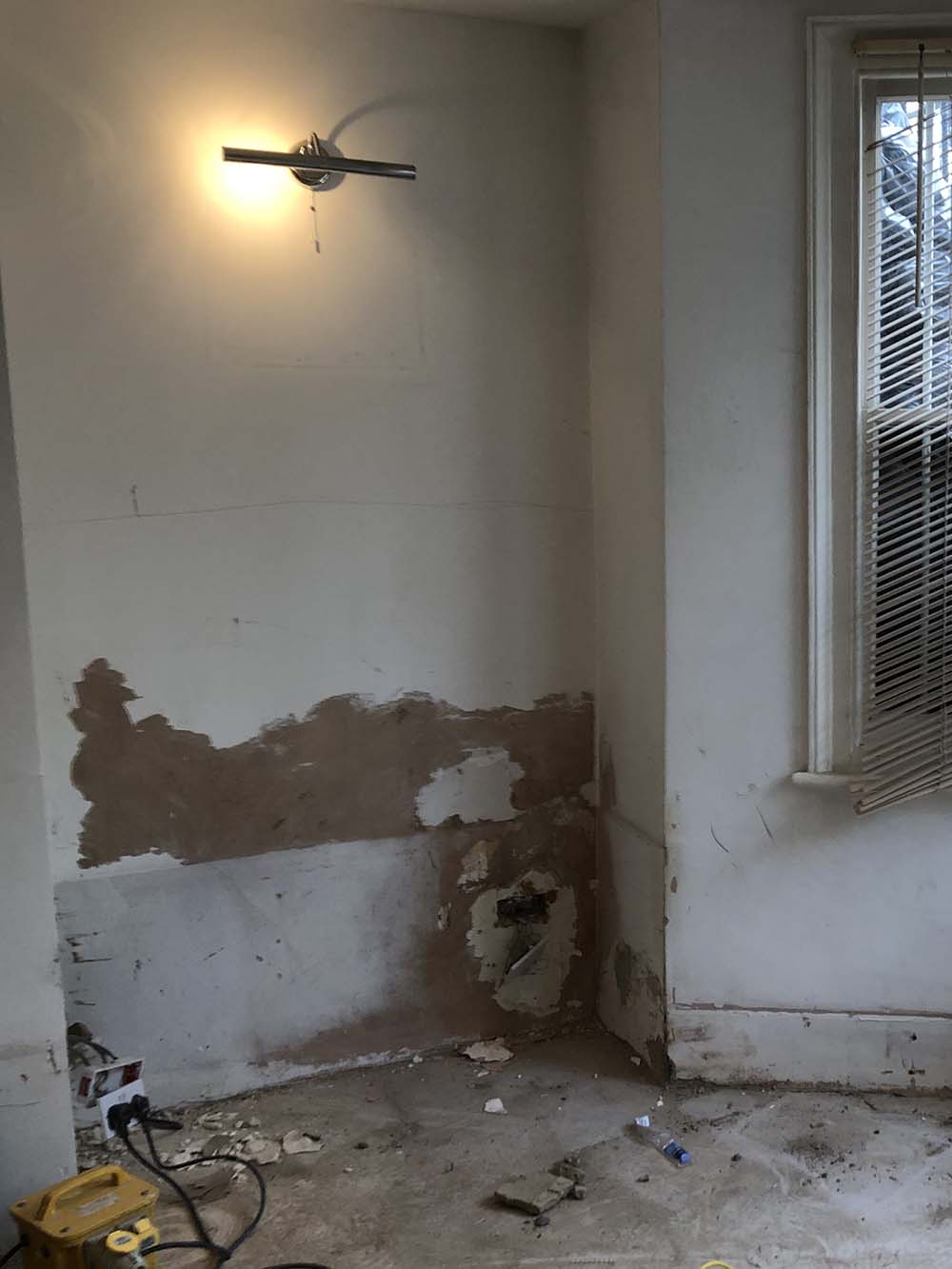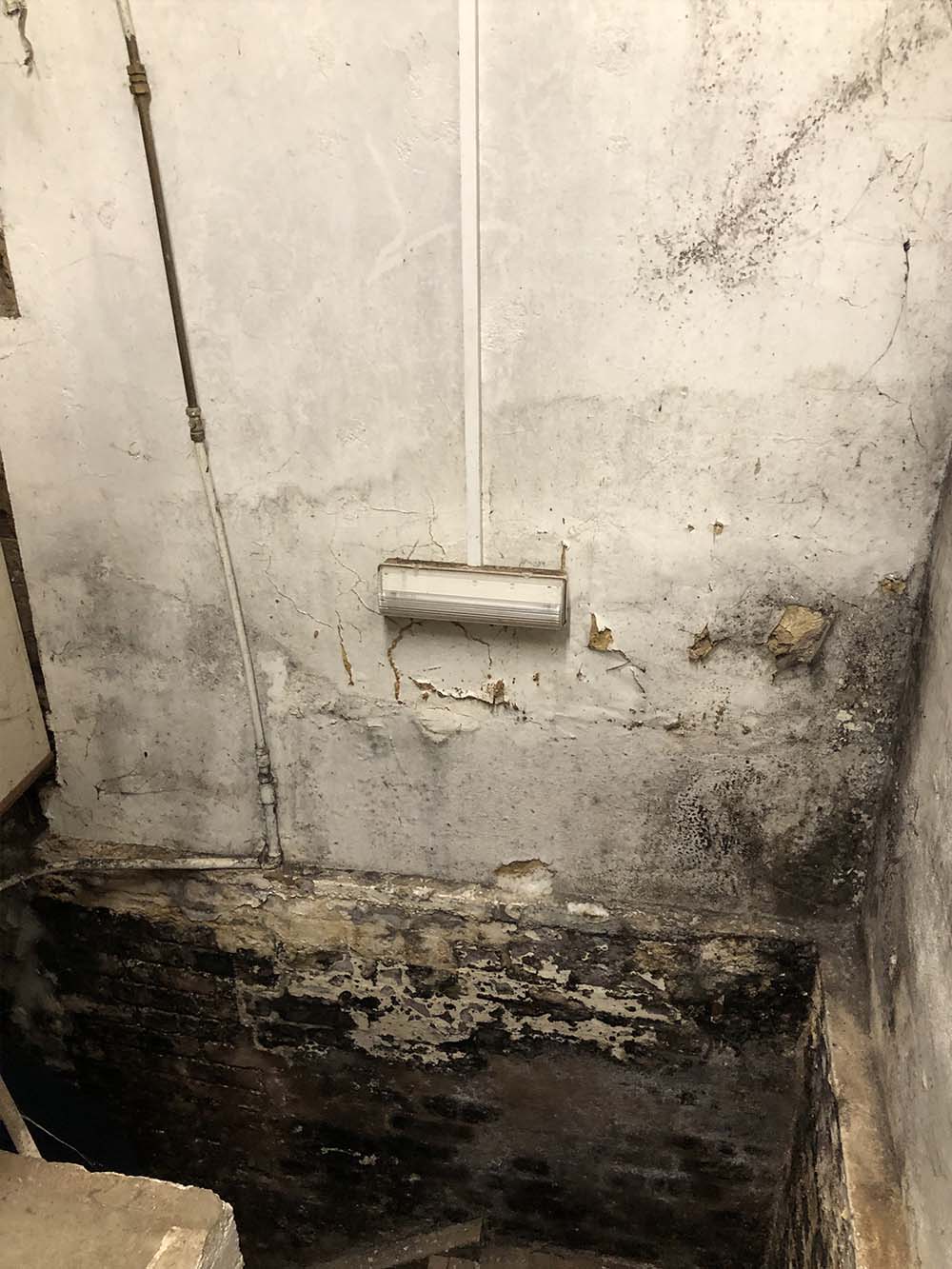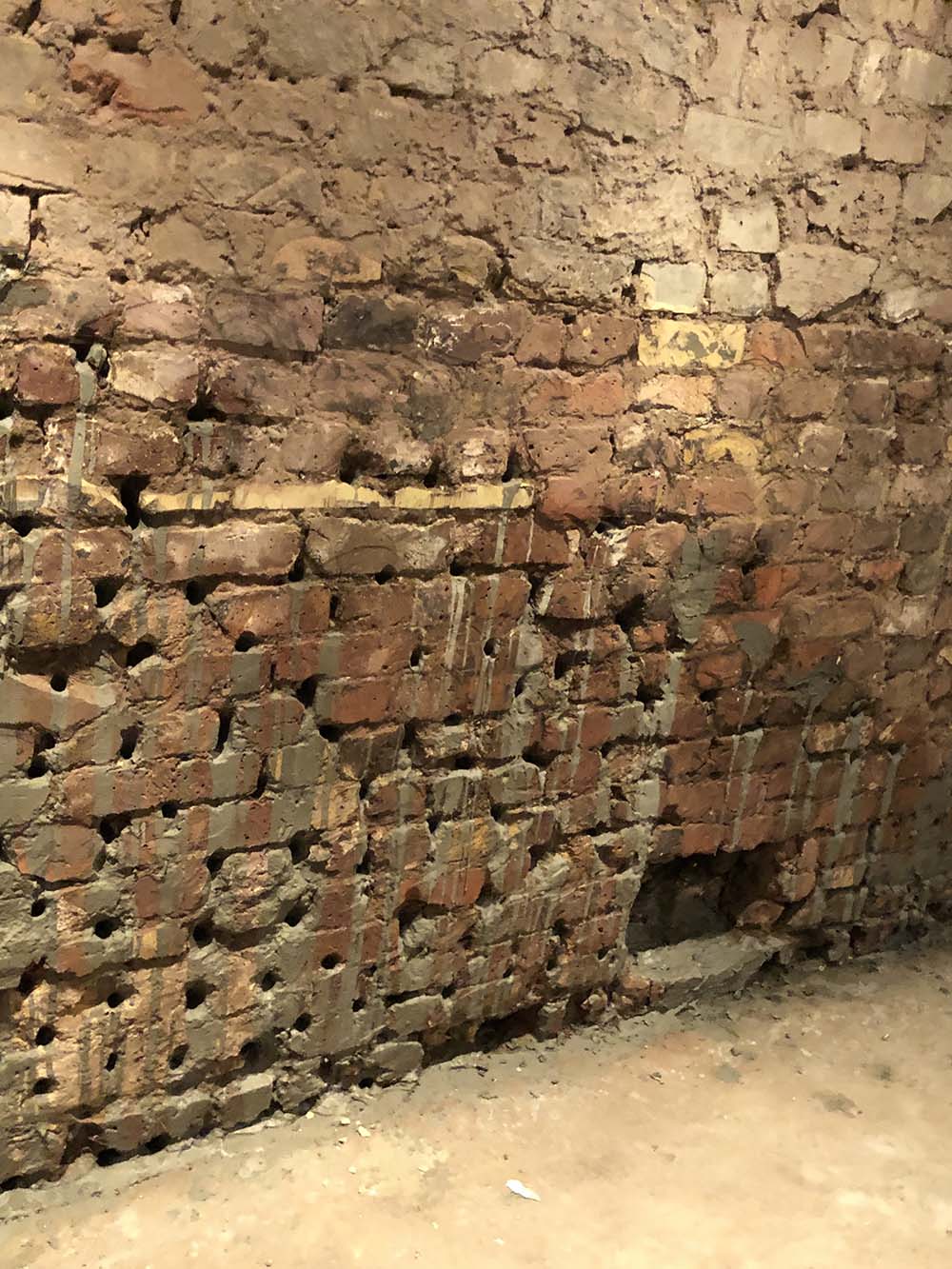



Crystal Damp Proofing & Basements
Leading Basement Waterproofing Specialists in Ealing W7, W13.
On May 12, 2022, we completed the basement damp proofing project. This basement was more than 2 meters below the ground floor. In the basement rooms, traces of hygroscopic salt were visible on the external and internal walls. Damp proofing in and around Ealing happens very often due to the very wetlands and the formation of this area.
For many years, Crystal Damp Proofing & Basements were providing waterproofing solutions for below ground structures and elevated decks or podiums. These solutions utilise a range of render and cavity drain membrane systems together with damp proof courses to prevent water from entering and damaging valuable properties and structures. We also offer treatments for the prevention of dry and wet rot decay within timbers. As a long established, experienced and certified provider, we are able to offer long-term guarantees for our structural waterproofing systems, remedial damp solutions and timber treatments.Crystal Damp Proofing & Basements
Our Basement Waterproofing Experts in Ealing W7, W13 Area

Crystal Damp Proofing & Basement LTD can give
a discount of 10% to every NEW customer.
Moisture in the house comes from leaks from a leaky roof or rising springs because the foundations or the floor are not adequately insulated, which harms the rooms in the Basement. It can also come from inside the basement house because people
create indoor moisture themselves, which is why efficient ventilation should remove moist air.
The excess moisture, regardless of its source, enables the development of mildew mushrooms, which are very dangerous for humans.
If we notice black pleats at the windows and doors, these are the first signals to consider proper insulation around doors and windows because their impermeability allows cold air to pass through.
It is difficult to make an unequivocal judgment without performing diagnostics, for example, measuring the wall’s structural humidity. In a lost boiler room, we can deal both with the intake of water penetrating through the external walls
(lack or inefficient vertical wall insulation) and footings (lack or inadequate horizontal wall insulation). Or another way is possible in this place, where there may be a corner at the joint of the foundation bench with the external wall, where there is
no efficient connection between the walls’ horizontal and vertical anti-damp insulation.
Unfortunately, draining cellars and the Basement is not a simple operation, and there is no universal recipe for it. Each Basement is a separate case that we must treat individually. We explain why there is moisture in the Basement and how to deal with fungi and moulds.
For drying works, you should employ qualified, experienced specialists and require them to guarantee the repair. The result should be preceded by a thorough analysis of the Basement’s cause and degree of moisture. A specialist from the company offering the dehumidification service will undertake it. His expertise makes it possible to select the most appropriate drying and renovation method. Combining several ways to get the desired effect is often necessary.
Not everyone knows that an m3 of a wall can hold up to 350 litres of water. When we see that the walls are wet, there are dirty stains on them, the paint is peeling, and the plaster is detaching, indicating that water has penetrated deep into the walls. If we miss these first signals, the unpleasant smell and mould stains on the application will remind us of the dampness. In such a situation, we need to quickly identify the source of the flooding and take the first rescue measures.
From the ground – when there is no horizontal or vertical insulation or when the insulation is no longer tight enough. Sometimes the insulation is also in good condition, but ground and water conditions have changed over time. For example, the groundwater level rose and began to put pressure on the walls. Light waterproofing cannot cope with it.
To avoid flooding, we should insulate walls with medium or heavy type;
rainfall – sometimes rainwater creates puddles around the house. If the insulation is ineffective, it will flood the walls locally. It is not as dangerous as in the case described above, but it will still cause many losses. Water flowing out of the drain pipe will cause much more trouble if it is not drained to a safe place (for example, to an absorbent well). It will force its way into the ground in contact with the basement walls and will use any leakage in the insulation to soak into the walls;
as a result of a failure of the water or sewage
system – the effects of such flooding are spectacular, but fortunately, the loss does not last long. Therefore, the walls only need to be dried, and a possible renovation of the flooded room carried out. Moisture will not return. Drainage also awaits us when the cellars are entirely flooded, for example, after a flood. All works related to drying the house are preceded by examining the humidity of the walls. This is done in one of two ways. Specialists can come with a hygrometer, i.e. a device that reads the humidity level in the wall and displays the value on a liquid crystal screen, or perform a carbide measurement (CW method). Both ways help to determine the percentage of water in the masonry. When the wall humidity does not exceed 3%, the masonry is dry. When it is around 5%, moisture is not dangerous, but it is worth repeating the test to check if it does not increase by accident in six months. When the humidity of the walls is 8-15% or more, the walls require immediate drying. Moisture testing should also be carried out during and after drying treatments.
In the case of bare bricks or chipped brick plaster, the application of dunking Slurry is risky because water penetrates the mortar between the bricks.
It is also worth paying attention to the corners of the walls that require more sealing than the others.
To get rid of the uncertainty as to whether the vertical insulation in the Basement is going to be done correctly, we make sure that the mortar between the bricks is made properly before applying, and in the case of missing mortar, we repair any missing mortars before using the first layer of plaster.
Therefore, to reduce the infiltration of water inside the Basement rooms.
Yes, of course, you can use it in the case of flooding the apartment or house with water; the use of the dehumidifier will prevent the growth of fungi and black mould; if it is used relatively quickly, we will avoid unpleasant odours and visible blooms on the walls in the concrete floor or carpets.
If in the Basement we decided to make anti-moisture insulation horizontally and vertically, using a moisture absorber will accelerate the drying process and prevent or at least reduce the amount of hygroscopic salt on the top layer of bricks of the concrete floor plaster.
Waterproofing Your Basement
Crystal Damp Proofing & Basements can waterproof your Ealing Basement in different ways, depending on your needs. The appropriate waterproofing system will be installed based on whether you want to use your basement for dry storage or you want to convert it into another room.
If you want to waterproof your Basement, Cellar or Vault, you should get one of our CSSW qualified surveyor to complete it for you. Waterproofing of below ground structures, including basements and cellars, is covered by the code of practice BS8102:2022. The design of your waterproofing system will consider:
- The proposed use of the basement
- Accessibility for maintenance
- Suitability of the chosen method for the structure
Which Basement Waterproofing Method Is Right For You?:
Type A – Barrier System (Tanking)
One of the most common methods of basement waterproofing is underground tanking. By applying a waterproofing membrane coating to the interior or exterior surface of your walls or bricks, our Crystal Damp Proofing & Ealing experts ensure that your Bexleyheath property is completely protected from the elements.
Type B – Waterproofing
Type B waterproofing is an inbuilt characteristic of the actual structure by adding waterproofing additives to the concrete used to form the floors and walls of the structure. Although normally effective in its own right, the joints of the structure are it’s weak spot and as such are susceptible to water penetration. Type B waterproofing is normally backed up by combining type A, C or sometimes both to ensure a watertight system and minimise risk. Type B basement waterproofing is normally specified in newbuild below ground structures.
Type C – Drained Cavity
Drainage cavities are made in between the internal and external basement walls and floorings in order to gather and drain water that has penetrated the walls through the use of a pump.
Crystal Damp Proofing & Basements supply and install waterproofing systems across London and the rest of the UK that comply with BS8102 and all third party warranty provider’s requirements. We can save money and protect Ealing the expert basement waterproofing design.
Trusted Damp Proofing Specialists
Damp Proofing is a term used for property preservation services aimed to prevent damaging damp affecting fabric within your property. Here at Crystal Damp Proofing & Basements we have more than 20 Years of damp proofing expertise and can treat and repair all types of property damp problems in Ealing W7, W13 and surrounding areas. No matter if you have a condensation problem, our experts can specify the right value for money solution.
